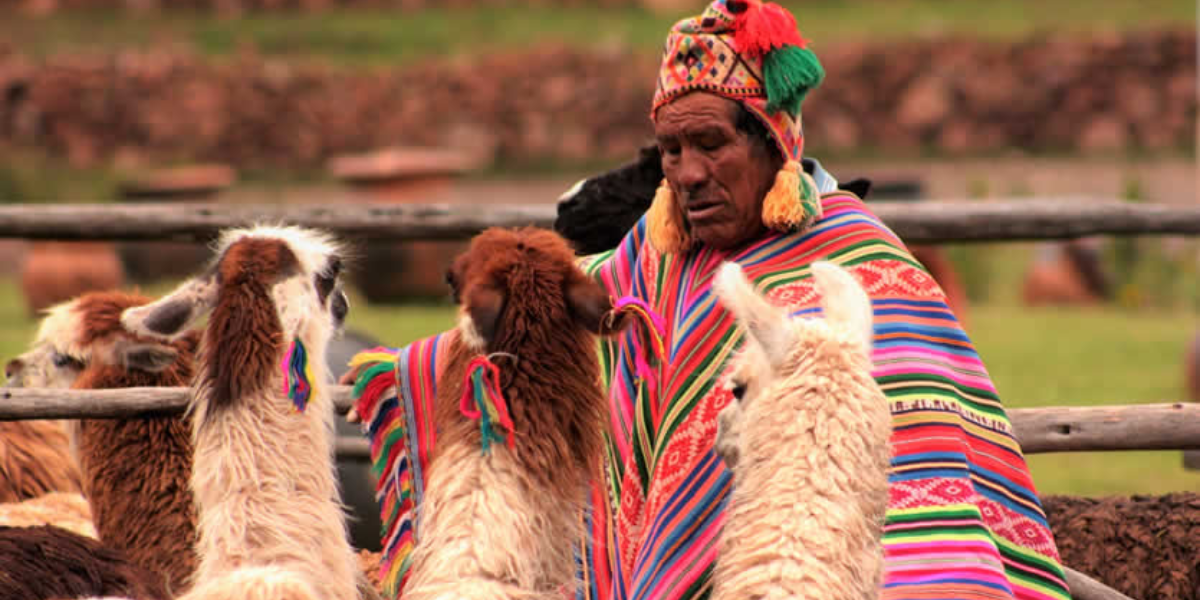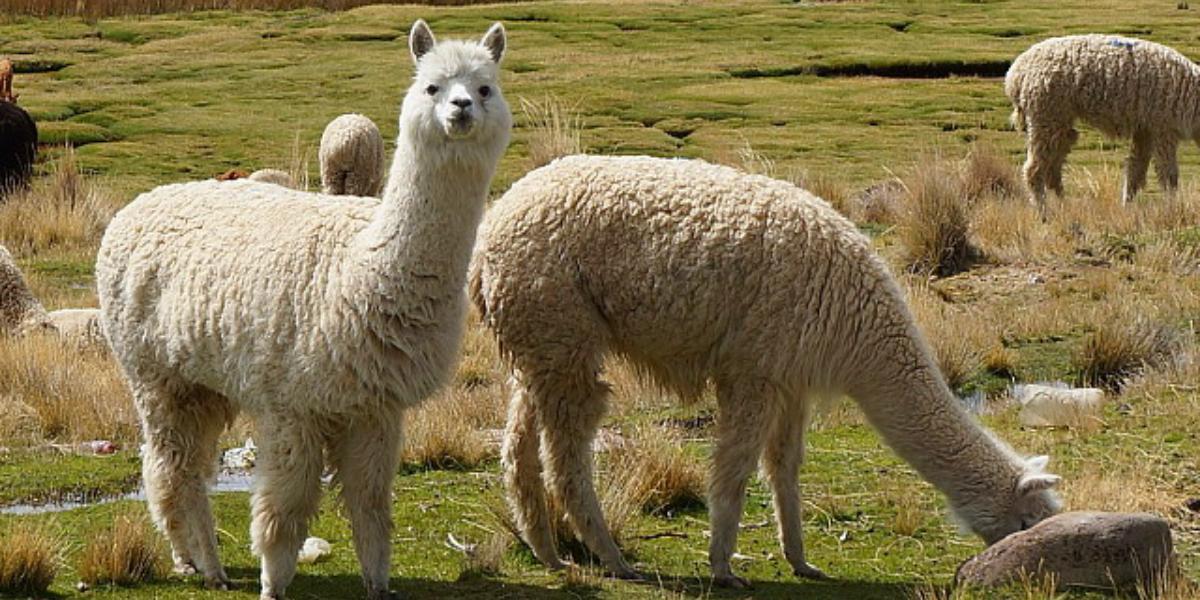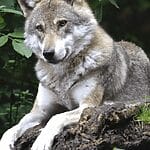8 Interesting Animals in Peru – You Might Not Know
Peru, is the third largest country in South America. From the verdant Amazon rainforest, teeming with an array of wildlife like the capybara and the colorful macaws, to the majestic Andes Mountains, it is home to the elusive Andean condor and the rare spectacled bear. Peru’s landscapes are as diverse as the wildlife they shelter.

Peru’s biodiversity makes it a world-class wildlife haven
Peru has a rich fauna and varied vegetation which lies within three main areas within its borders. It hosts 28 out of 32 climate zones that exist on Earth and is amongst the biodiverse countries that anyone can visit.
Besides more than 1,600 species of birds and mammals, there are abundant amphibian species, and there are also several butterflies. These animals include some of the most endangered animals in nature like the rare puma.
The coastal areas, influenced by the cold Humboldt Current, provide a unique ecosystem for marine species and seabirds, such as the Peruvian pelican and the Humboldt penguin. In the high-altitude plains of the Andes, one can find vicuñas, relatives of llamas, gracefully roaming.

These varied landscapes not only offer a visual feast for nature enthusiasts but also serve as vital sanctuaries for the interesting animals in Peru, playing a crucial role in their conservation.
8 Interesting Animals in Peru – (Peruvian Animals with Interesting Pictures)
Do you know that in the cloud forests of the Peruvian Andes, around ten new frog species have been discovered in the last two years. Moreover, there are many interesting animals in Peru that might amaze you.
In this guide, we have gathered 08 interesting animals in Peru that help you to explore many interesting species in Peru.
Andean Spectacled Bear
The Andean spectacled bear, scientifically known as Tremarctos ornatus. It is the only bear native to South America and a symbol of the Andean region’s unique biodiversity. These interesting animals in Peru are distinctive for the whitish or beige markings around their eyes, which look like spectacles. This bear has a predominantly black or dark brown fur coat.

It is relatively small compared to other bear species, with males typically weighing between 100-200 kilograms and females being smaller. These bears are predominantly arboreal, adept at climbing even the tallest trees in the Andes Mountains, where they primarily reside.
Their diet is surprisingly diverse, consisting mainly of fruits, cacti, bamboo hearts, insects, small mammals, and occasionally carrion. Spectacled Bears play a critical ecological role as seed dispersers in their habitats.
They face threats from habitat loss due to agriculture and mining, as well as from poaching. On the IUCN red list of threatened species spectacled bears are marked as “Vulnerable species.”
Do you know the spectacled bear or Andean bear is the only species of bear that is thriving in South America.
Sea Lions – Interesting Peruvian Animals
Sea lions, charismatic marine mammals belonging to the pinniped family. These interesting animals in Peru are renowned for their playful antics and social nature. These semi-aquatic animals are particularly prevalent along the rocky shorelines of North and South America, including the Galápagos Islands and Australia.

With sleek, torpedo-shaped bodies, external ear flaps, and powerful flippers, sea lions are well-adapted to their aquatic lifestyle. Their colonies, often comprising hundreds or even thousands, create bustling rookeries where social bonds and hierarchical structures develop.
The sea lions are highly vocal, and communicate with distinctive barks and growls. These are exceptional swimmers can reach impressive speeds and exhibit acrobatic prowess, leaping out of the water and riding ocean waves.
Sea lions are opportunistic feeders, primarily consuming fish and squid, showcasing their vital role in marine ecosystems. Additionally, conservation efforts are crucial to protect these interesting animals from threats such as habitat degradation and human impact on their coastal habitats. On the IUCN red list of threatened species sea lions are listed as “Least Concern.”
Peruvian Hairless Dog
The Peruvian Hairless Dogs are one of the most interesting animals in Peru. They are also known as the Perro Sin Pelo del Perú, is a breed of dog with ancient origins, dating back to pre-Incan times.

This breed is most notable for its distinctive appearance, characterized primarily by its lack of hair, though there are varieties with short coats. The skin of the hairless variety can be a range of colors, and they often sport a tuft of hair on their head and tail.
The breed is known for being intelligent, affectionate, and loyal, making them excellent companions. They are relatively active and enjoy being part of family activities.
One of the interesting thing about the Peruvian Hairless Dog is its body temperature, which is higher than most other dog breeds, leading them to seek warmth and enjoy sunbathing.
Moreover, they are not listed on the International Union for Conservation of Nature (IUCN) Red List of Threatened Species, which is the global standard for assessing the conservation status of plant and animal species.
Humboldt Penguins
The Humboldt Penguin, a captivating species native to South America, primarily dwells along the coasts of Chile and Peru. This medium-sized penguin is named after the cold Humboldt Current it inhabits.
Additionally, they have black and white plumage, with a distinctive black horseshoe-shaped band on their chest. Humboldt Penguins are highly adapted to their marine environment. Their streamlined bodies and strong flippers make them excellent swimmers, reaching speeds up to 20 miles per hour.

These birds are typically around 65 to 70 cm tall, weighing between 3.6 and 5.9 kg. Their diet mainly consists of small fish, squid, and krill, which they skillfully catch in the nutrient-rich waters of the Humboldt Current.
On land, they nest in guano deposits or burrows, which offer protection from predators and extreme weather. Unfortunately, they are classified as “Vulnerable Species” on the IUCN red list of threatened speciesdue to threats like overfishing, climate change, and habitat destruction.
Manu Biosphere Reserve – Best Place to find out Interesting Bird species in Peru
Manu Biosphere Reserve is located in the heart of the Peruvian Amazon. It stands as a biodiversity hotspot and a haven for bird enthusiasts. It is renowned as one of the best places to discover interesting bird species in Peru.

This expansive protected area encompasses diverse ecosystems, from lowland rainforests to high-altitude cloud forests. Additionally, it is home to over 1,000 bird species, including rare and endemic ones like the Andean cock-of-the-rock and the marvelous spatuletail hummingbird, Manu captivates nature lovers and bird enthusiasts.
The reserve’s rich tapestry of flora and fauna extends beyond birds to include diverse mammals, reptiles, and amphibians. Visitors can reach by boat or overland from the city of Cusco. It offers a truly immersive experience in pristine wilderness, providing a unique opportunity to witness the remarkable avian diversity.
Peru’s National Bird – Andean Cock of the Rock (Rupicola peruvianus)
The Andean Cock-of-the-rock has a striking appearance and unique behavior. These birds are native to the cloud forests of the Andean slopes in South America.
These interesting animals in Peru can be recognized by their vibrant orange-red plumage, prominent fan-shaped crest, and strong, hooked bill, with males exhibiting more vivid colors than females.

These birds, typically about 30 cm long, play a fascinating role in the ecosystem as frugivores, helping in seed dispersal.
The Andean Cock-of-the-rock is also famous for its elaborate courtship rituals – males perform competitive displays in communal leks, where they showcase their plumage and acrobatic abilities to attract females.
Their nests, often built on rocky ledges, further highlight their adaptation to the rugged terrain. These interesting animals in Peru are listed as “Least concern” on the IUCN Red List of threatened species.
However, the primary threats to the Andean Cock-of-the-rock include habitat loss due to deforestation, logging, and agricultural expansion.
Machu Picchu
Machu Picchu situated high in the Andes Mountains of Peru, stands as a testament to ancient engineering and architectural prowess. It was built in the 15th century, this UNESCO World Heritage site is a marvel of stone construction, perched at an altitude of 2,430 meters (7,970 feet).

The “Lost City of the Incas” is popular for its sophisticated terraces, intricate stone buildings, and precise astronomical alignments. Serving as a royal estate for Inca emperor Pachacuti, Machu Picchu remained hidden from the Spanish conquistadors and was rediscovered by Hiram Bingham in 1911.
It is accessible via the iconic Inca Trail or by train, Machu Picchu remains a symbol of ancient ingenuity, cultural richness, and breathtaking natural beauty that draws millions of visitors each year.
Tourists visiting Machu Picchu can encounter a variety of wildlife amidst the ancient ruins and breathtaking landscapes. Llamas and alpacas, iconic South American camelids, freely roam the site, providing unique photo opportunities against the backdrop of the historical citadel.

Birdwatchers may spot Andean cock-of-the-rock, vibrant hummingbirds, and the occasional soaring condor. In the surrounding forests, spectacled bears, foxes, and an array of butterflies add to the diverse fauna.
Andean Condor- World’s Largest Flying Bird
The Andean Condor, a magnificent bird of prey native to South America, holds the title of the world’s largest flying bird. With an impressive wingspan that can exceed 3 meters (10 feet), this interesting species is a symbol of the Andes Mountains and can be found soaring at high altitudes.

With distinctive black plumage, a white ruff of feathers around its neck, and a bald head, the Andean Condor is a striking presence in the sky.
Sadly, the Andean Condor are facing conservation challenges due to habitat loss and human disturbance. They are categorized as “Vulnerable Species” on the IUCN red list of threatened species.
Colca Canyon
Colca Canyon, located in Peru’s Arequipa region, is a site of breathtaking natural beauty and profound cultural significance. Famous as one of the world’s deepest canyons, it plunges to depths of about 3,270 meters (10,730 feet), surpassing even the Grand Canyon in the United States

This spectacular geological formation is flanked by towering Andean peaks and sprawling, ancient agricultural terraces that reflect centuries of cultivation by pre-Inca and Inca civilizations.
Moreover, a major attraction is the Cruz del Condor viewpoint, where visitors can witness the majestic Andean condors soaring on thermal currents. It also offers opportunities for hiking, hot springs, and observing diverse wildlife
Giant River Otters – Amazing Animals
The Giant River Otter, a captivating species endemic to South America, thriving in the Amazon Rainforest, stands out as an extraordinary aquatic mammal. Pteronura brasiliensis, the scientific name for this majestic creature, is the world’s largest otter species.

Growing up to six feet in length, these otters are the largest of their kind and boast striking features such as webbed feet and a distinctive, sleek coat. Commonly, they are found in the Amazon, Orinoco, and La Plata river systems, these social animals are known for their playful behavior and tight-knit family units.
Giant River Otters are interesting animals in Peru and are highly skilled hunters. They prey on fish and occasionally tackle caimans or anacondas. Unfortunately, their population faces threats from habitat loss, pollution, and poaching. Presently, these otters are categorized as ” Endangered Species” on the IUCN red list of threatened Species.
Pink Dolphin
The Pink Dolphin, also known as the Amazon River Dolphin or Boto (Inia geoffrensis), is a charismatic aquatic mammal found in the freshwater river systems of South America, particularly in the Amazon and Orinoco River basins. Their natural habitat spans across countries such as Brazil, Peru, Colombia, Venezuela, and Ecuador.
Among these nations, the Amazon River in Brazil stands out as one of the best spots to encounter these unique creatures due to its vast and relatively undisturbed aquatic environments.

This fascinating species is recognized for its distinctive pink hue and long, slender snout. Pink Dolphins are highly social and intelligent beings, often seen swimming in groups or solitary individuals navigating through murky river waters.
Despite their captivating presence, Pink Dolphins face significant threats to their population due to habitat degradation, pollution, and accidental entanglement in fishing gear.
The IUCN Red List categorizes the Pink Dolphin as “Data Deficient,” reflecting the limited scientific data available on their population trends and distribution.
Frequently Asked Questions about Interesting Animals in Peru
What’s Peru’s national animal?
Vicuñas are the national animals of Peru.
What is Peru known for animals?
Peru is known for Llamas and their stockier cousins, alpacas.
What is Peru famous for?
Machu Picchu, Rainbow Mountain, Lake Titicaca, the Amazon rainforest, Sacred Valley are famous places in Peru.
What is Peru’s most common animal?
llama is the most common animals in Peru.
What are the sacred animals in Peru?
The most common representations for sacred animals are the condors, pumas and the snake.
What is Peru famous for?
It is famous for its epic landmark sites as large as Machu Picchu Amazon Rainforest or Titicaca Lake.
Does Peru have leopards?
Panthera pardus leopards are considered to be vulnerable species. It is the only leopard that has lived in Peru.
- 12 Interesting Animals in Dominican Republic - 2024-05-02
- 8 Common Dangerous Animals in Yosemite - 2024-05-01
- 11 Interesting Animals in the Midwest - 2024-05-01









